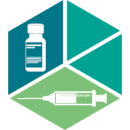Veterinary coronavirus vaccines: successes, challenges & lessons learned for SARS-CoV-2 control
Vaccine Insights 2023; 2(8), 259–277
10.18609/vac.2023.039
Members of the Coronaviridae family infect a large number of animal species, including humans. Coronaviruses of clinical significance in veterinary species include severe and fatal vasculitis in cats caused by feline infectious peritonitis virus (FIPV), and highly contagious and economically devastating diseases in livestock, including porcine epidemic diarrhea virus (PEDV), transmissible gastroenteritis virus (TGEV) in pigs, bovine coronavirus (BCoV) in dairy and beef cattle, and avian infectious bronchitis virus (IBV) in chickens. Knowledge of the viral replication, pathogenesis, protective immunity, and genomic mutations and evolution has led to the development of a variety of licensed vaccines against these veterinary coronaviruses. Some of the licensed animal coronavirus vaccines have been in commercial use for decades and have demonstrated many of the same challenges in veterinary species that are being faced today with the relatively new SARS-CoV-2 vaccines. Here we review the coronaviruses of high clinical impact in veterinary species, identify common themes regarding the challenges and successes of animal coronavirus vaccines that have been in commercial use for decades, and offer potential insights and lessons learned for SARS-CoV-2 vaccine and vaccination programs.
